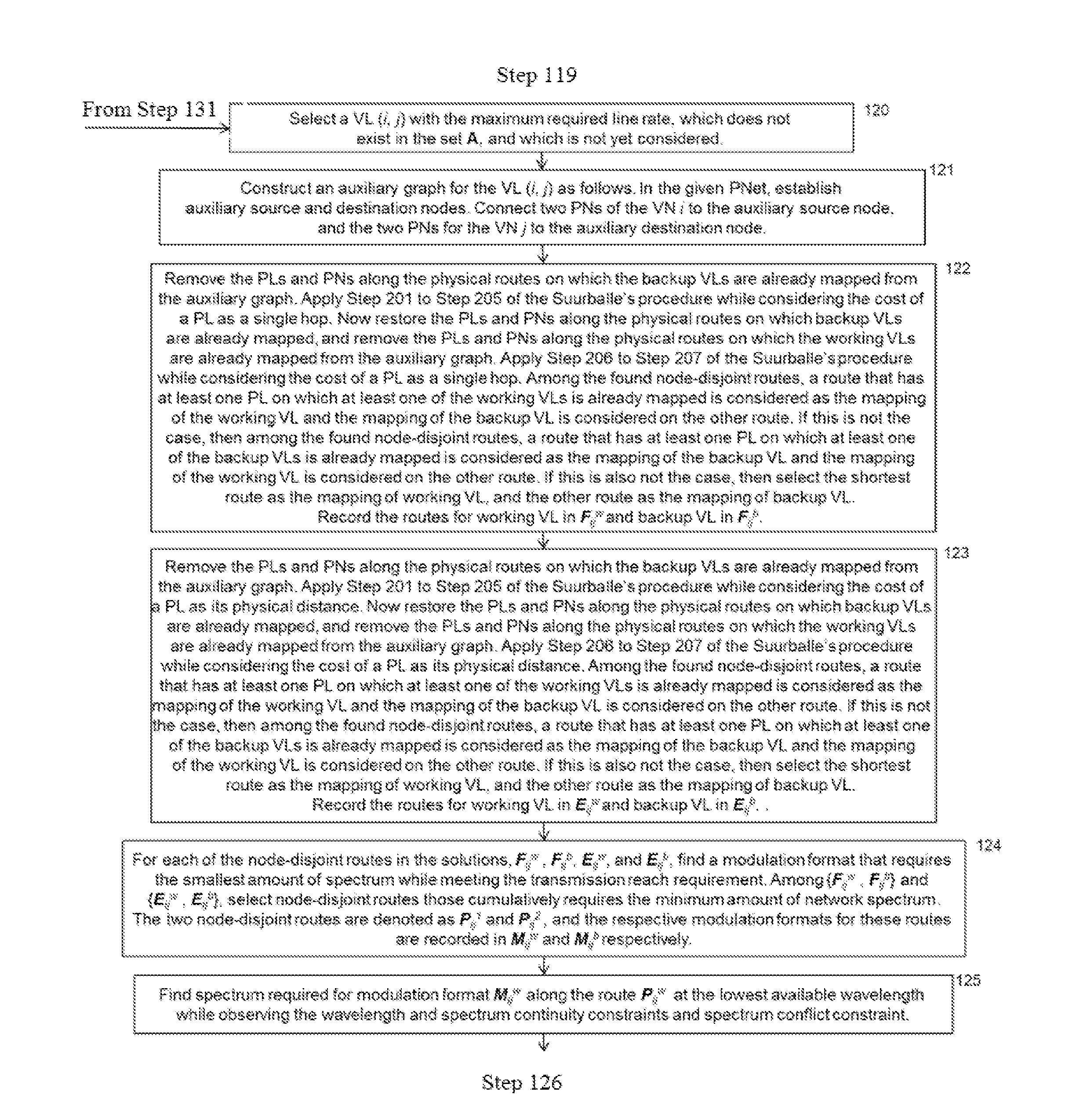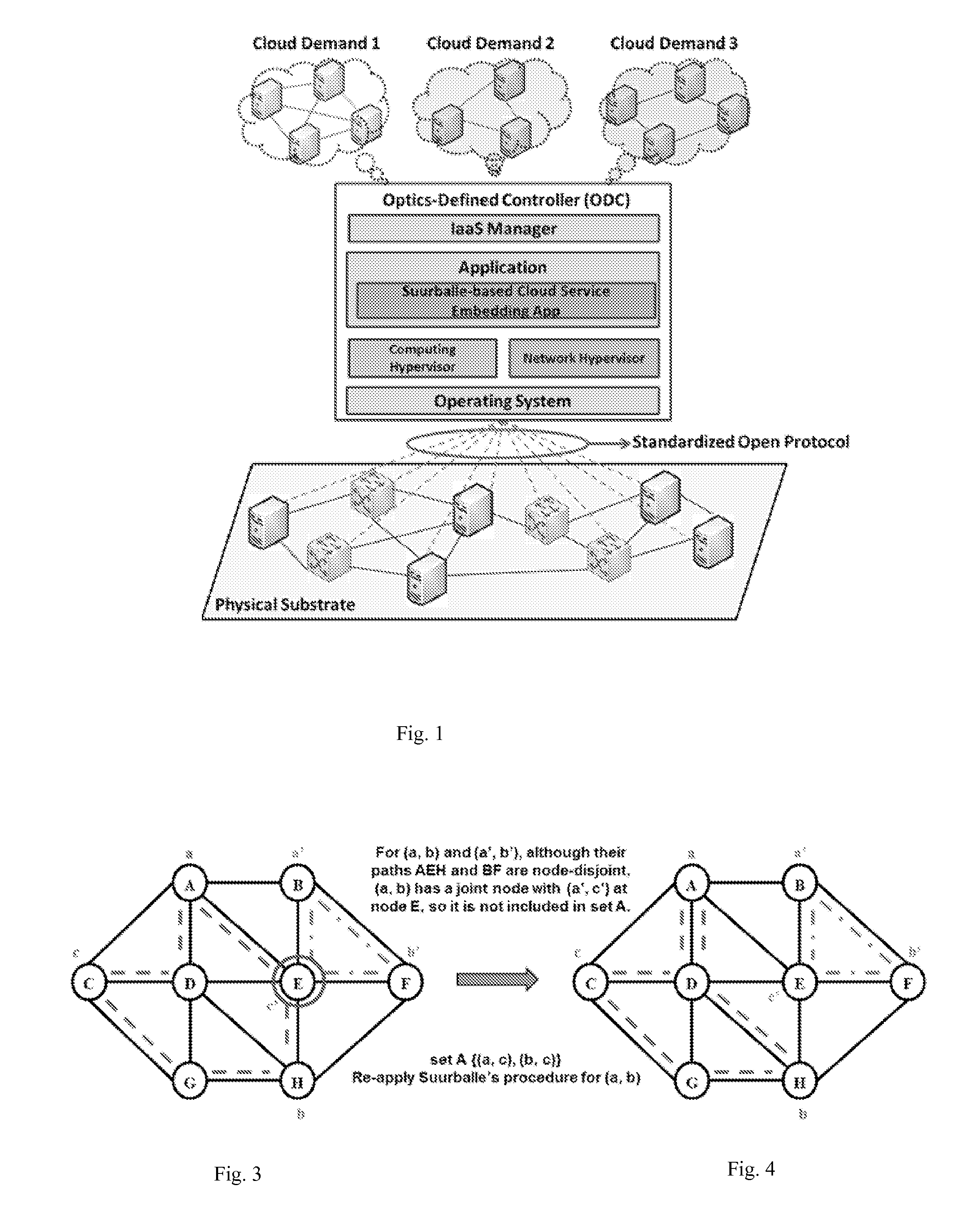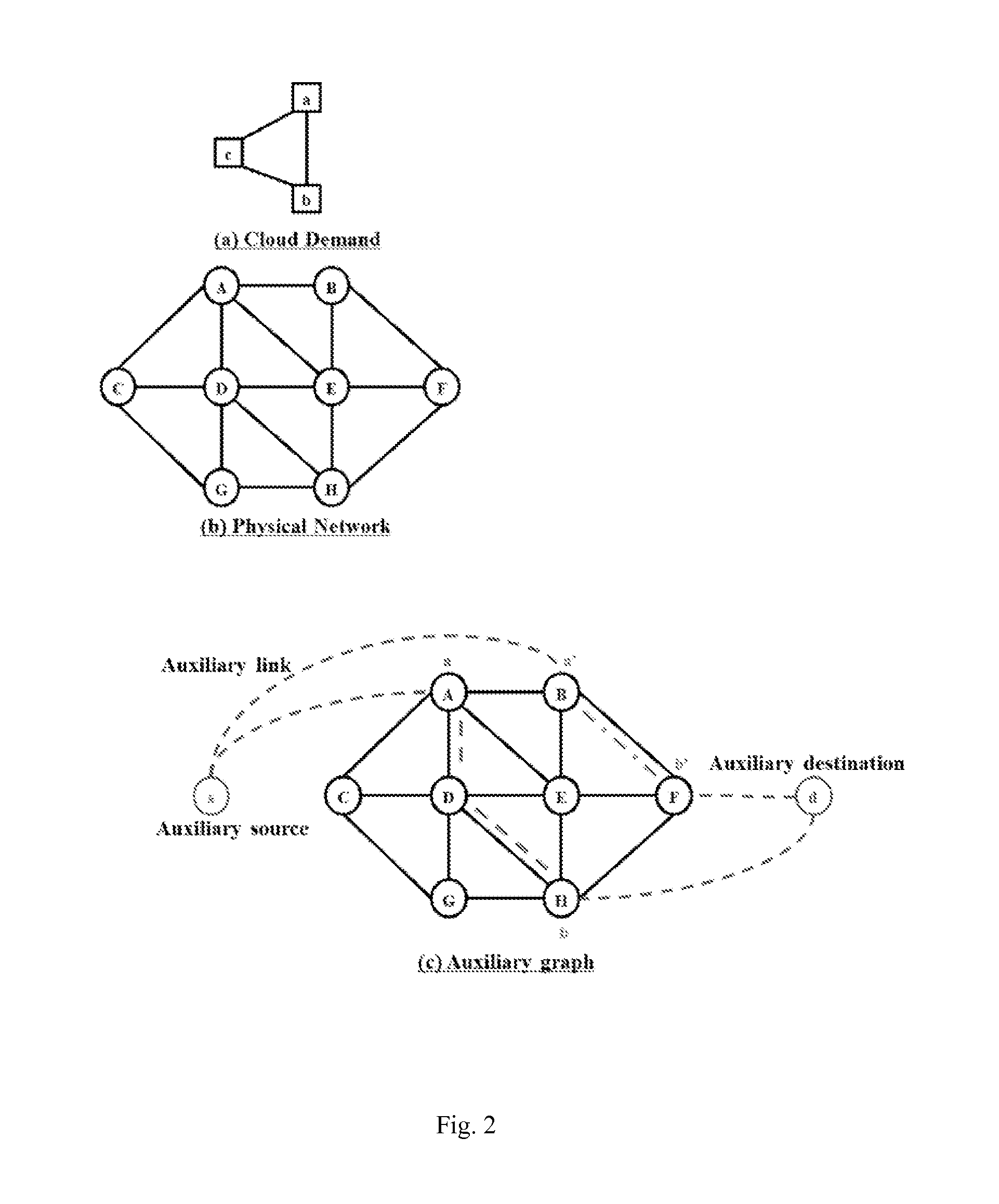Suurballe-based Cloud Service Embedding Procedure in Software-Defined Flexible-Grid Optical Transport Networks
a flexible, cloud-based technology, applied in the field of optical communication, can solve the problems of failure of any data center, inability to optimally meet all the requirements of a cloud application, and one data center may not provide all types of resources
- Summary
- Abstract
- Description
- Claims
- Application Information
AI Technical Summary
Benefits of technology
Problems solved by technology
Method used
Image
Examples
Embodiment Construction
[0023]The present invention is directed to an efficient procedure, namely a Suurballe-based cloud service embedding procedure that first maps working and backup virtual nodes over physical nodes while balancing computational resources of different types, and finally, maps working and backup virtual links over physical routes while balancing network spectral resources using the Suurballe's procedure.
[0024]The procedure first maps working and backup virtual nodes (VNs) over physical nodes (PNs) while performing load balancing over node resources. The VNs are selected one-by-one in a descending order of the average requested computing resources. For the selected VN, a set of PNs are searched, which have at least the requested number of computational resources of each type. If the number of PNs within the found set is less than two, then the cloud demand is blocked. On the other hand, if the set contains at least two PNs, then the procedure selects two PNs from the set on which none of ...
PUM
 Login to View More
Login to View More Abstract
Description
Claims
Application Information
 Login to View More
Login to View More - R&D
- Intellectual Property
- Life Sciences
- Materials
- Tech Scout
- Unparalleled Data Quality
- Higher Quality Content
- 60% Fewer Hallucinations
Browse by: Latest US Patents, China's latest patents, Technical Efficacy Thesaurus, Application Domain, Technology Topic, Popular Technical Reports.
© 2025 PatSnap. All rights reserved.Legal|Privacy policy|Modern Slavery Act Transparency Statement|Sitemap|About US| Contact US: help@patsnap.com



